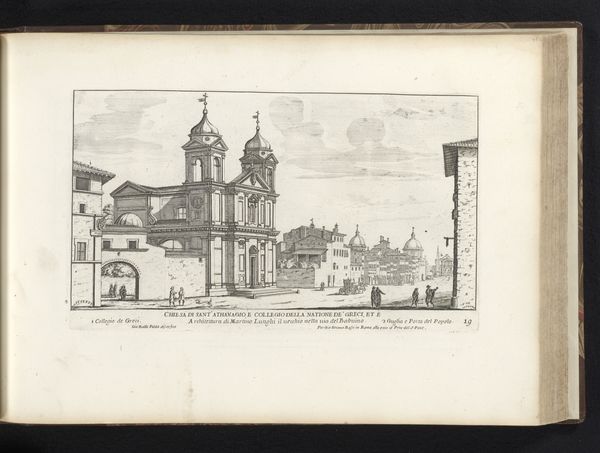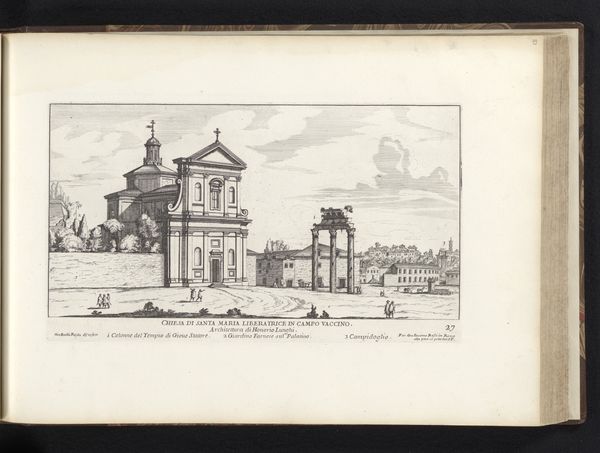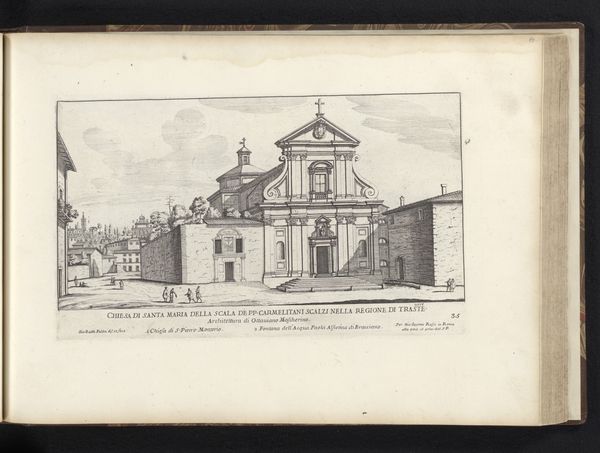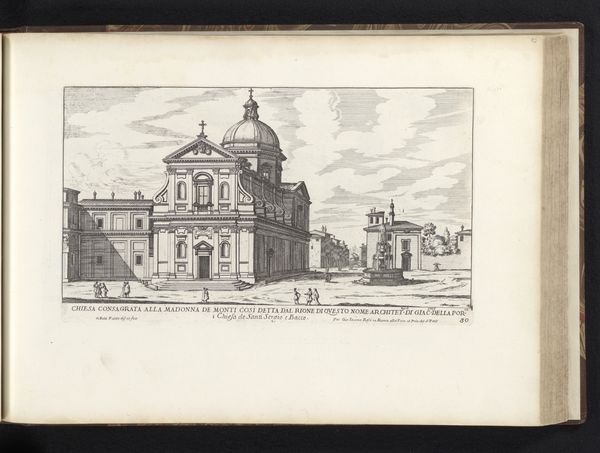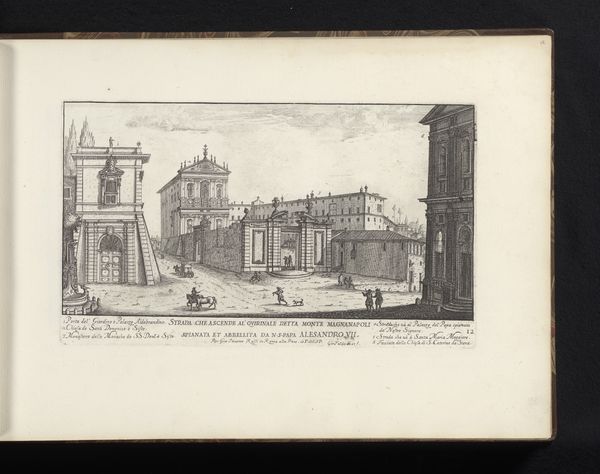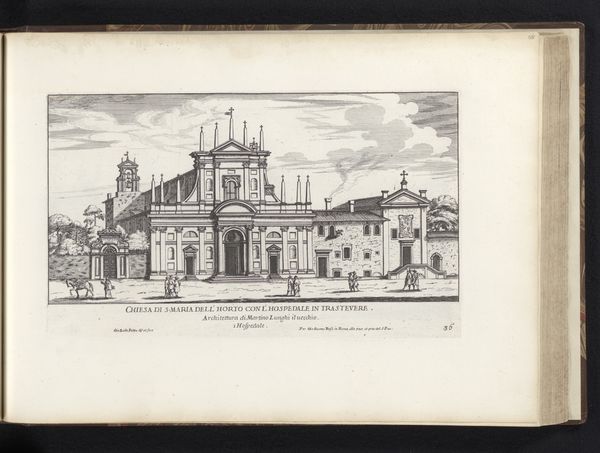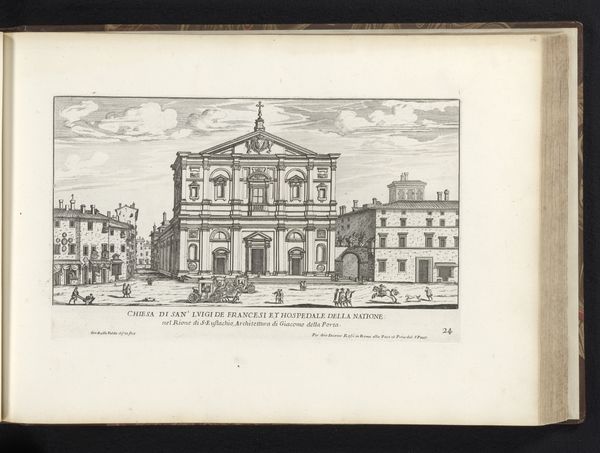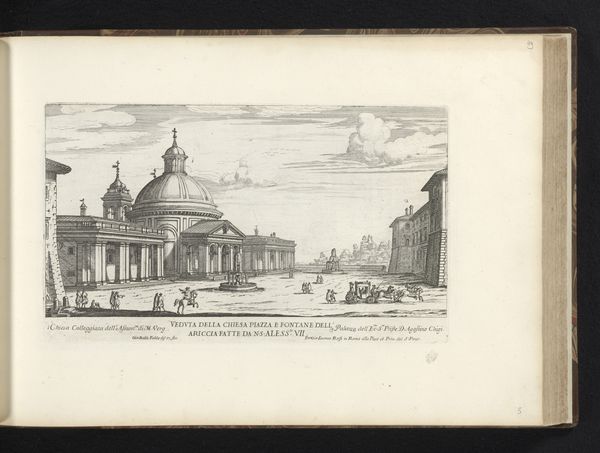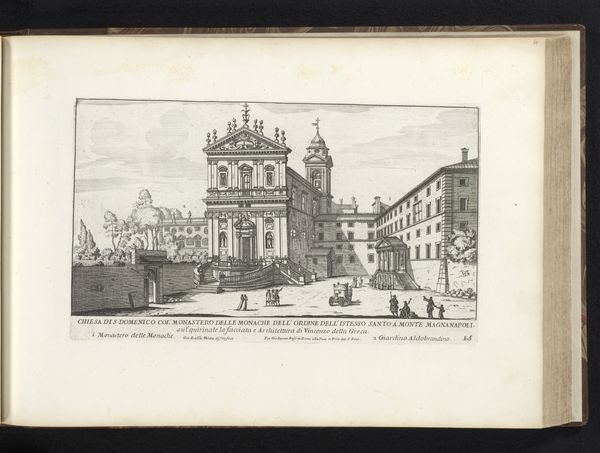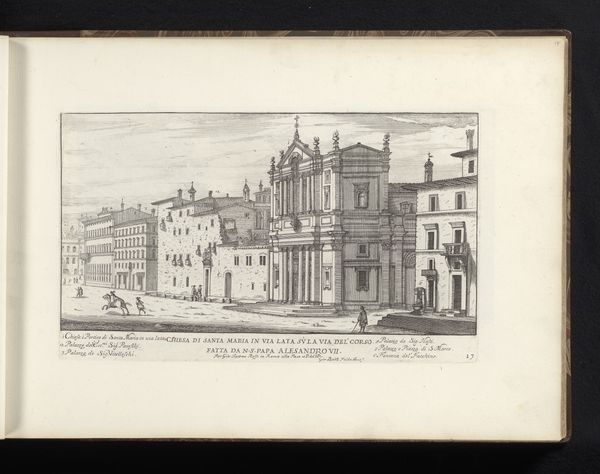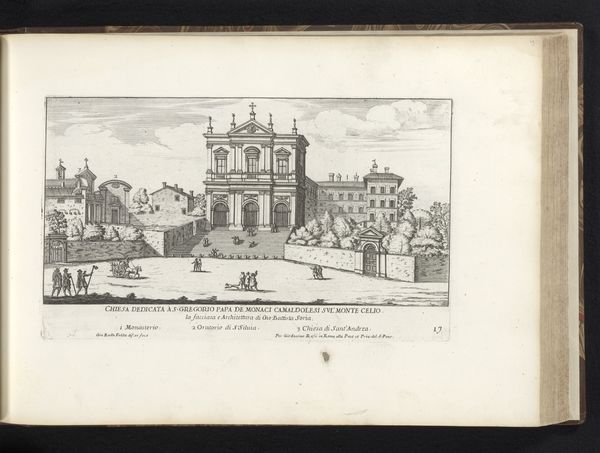
drawing, print, etching, ink, engraving, architecture
#
drawing
#
aged paper
#
baroque
#
mechanical pen drawing
# print
#
etching
#
sketch book
#
personal sketchbook
#
ink
#
pen-ink sketch
#
pen and pencil
#
pen work
#
sketchbook drawing
#
cityscape
#
storyboard and sketchbook work
#
sketchbook art
#
engraving
#
architecture
Dimensions: height 172 mm, width 287 mm
Copyright: Rijks Museum: Open Domain
Curator: This delicate etching presents Santa Maria della Vittoria in Rome, dating back to 1669-1670. It's currently held at the Rijksmuseum and attributed to Giovanni Battista Falda. Editor: My first thought is the striking contrast between the architectural rigidity and the ethereal sky. It feels very much of its time, showcasing power and divine order. But I can't help but wonder, who was this order *for*? Curator: Falda, being a prominent printmaker, created these views of Rome intending them to circulate among travelers and patrons. The prints helped disseminate knowledge of architectural advancements, showcasing Rome as a center of power and artistic innovation, reinforcing the Church's image. Editor: Right, but this dissemination was extremely selective, wasn't it? Access to such images was a privilege, further solidifying social hierarchies. The grandeur depicted served as a constant visual reminder of who held authority. It really is all about controlling narratives. Curator: That’s a very valid point. Consider the meticulous detail, indicative of Baroque sensibilities and architectural documentation. The vantage point strategically emphasizes the Church's imposing presence, overshadowing the common populace depicted as mere figures. These prints, thus, were never neutral documents. Editor: Absolutely. And thinking about "Vittoria" – Victory – it prompts me to question whose victory it really represents? We see the opulent display of religious might during a period of immense social disparity, colonization, and subjugation across the globe. This image can provoke thinking about art serving colonial ambitions and how these buildings often became symbols of imposed power. Curator: This building still operates today and many believe is a key masterpiece. And one thing to note, as it's only apparent from standing in front of it, is how much smaller the building is when seen in person versus other buildings nearby. Editor: Indeed, the ability to contextualize the artistic decisions helps in forming a deeper critique. It prompts us to challenge what is celebrated and whose voices are centered in art historical narratives, doesn't it?
Comments
No comments
Be the first to comment and join the conversation on the ultimate creative platform.


